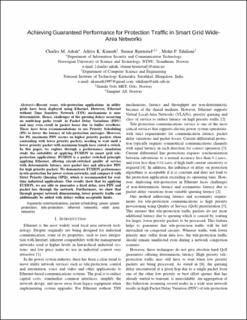Achieving Guaranteed Performance for Protection Traffic in Smart Grid Wide- Area Networks
Abstract
Recent years, tele-protection applications in utility grids have been deployed using Ethernet. However, Ethernet without Time Sensitive Network (TSN) mechanisms is non-deterministic. Hence, challenges of the queuing delays occurring on multi-hop paths result in Packet Delay Variations (PDV) and may even result in packet losses due to buffer overflows. There have been recommendations to use Priority Scheduling (PS) to lower the latency of tele-protection messages. However, for PS, maximum PDV occurs on higher priority packets when contending with lower priority packets, needing to wait until a lower priority packet with maximum length have exited a switch. In this paper, we explore through a performance simulation study the suitability of applying FUSION in smart grid tele-protection applications. FUSION is a packet switched principle applying Ethernet, offering circuit-switched quality of service with deterministic latency, zero packet loss and ultra-low PDV for high priority packets. We demonstrate FUSION performance in tele-protection for power system networks and compare it with Strict Priority Queuing (SPQ), which is recommended for real-time industrial applications. Our results show that by applying FUSION, we are able to guarantee a fixed delay, zero PDV and packet loss through the network. Furthermore, we show that through proper network dimensioning, lower priority traffic can additionally be added with delays within acceptable limits.
